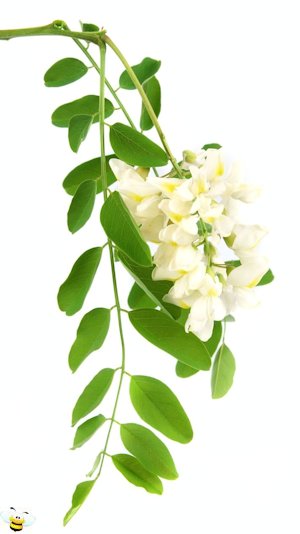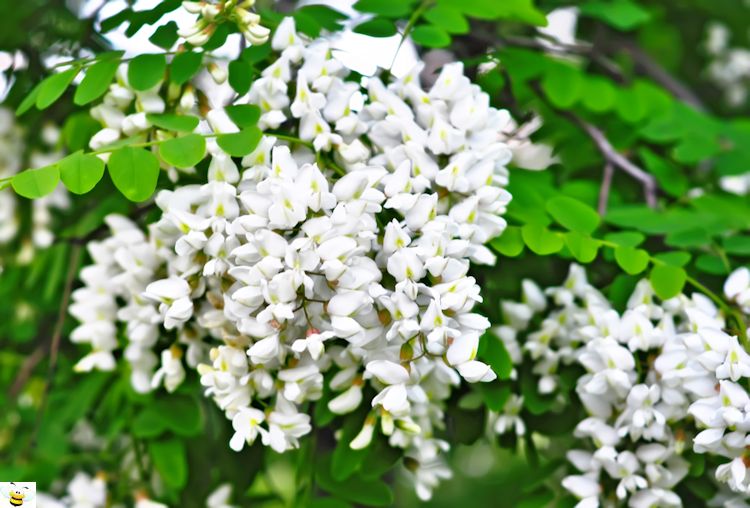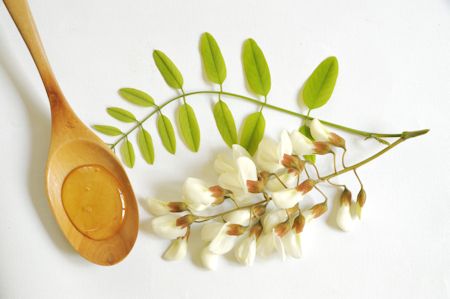Acacia Honey is a Pleasant Experience,
With a Surprising Twist...
Did you know... that the scientific name for the acacia honey plant is robinia pseudoacacia?
That is important here only to point out that pseudo is Greek for lying or false. Therefore; scientifically speaking... this plant is a false acacia and not truly in the acacia plant family.
The common name for this honey plant is Black Locust but the honey produced from this tree has become commonly known as Acacia Honey.

WHIZZ NOTE: If your experience is anything like mine you will discover the following!
Flavor... is truly unique with a mild, sweet, and floral flavor. Light hints of vanilla but no aftertaste.
Color... is light yellow to almost colorless like liquid glass when pure.
Storage... This honey is very slow to crystallize and remains in a liquid state for a long period of time due to its’ high concentration of fructose sugar content.

Plant:
This Black Locust honey plant is a tree that can reach seventy feet tall and nearly three feet in diameter. Its’ leaves are long with nine to nineteen oval leaflets and the base of the leaf has a pair of short thorns distinguishing the Black Locust from the Honey Locust. The Honey Locust has characteristic long branched spines on the trunk.
Bloom:
Flowers are in loose drooping bunches four to five inches long. Each flower is about an inch long, cream white, nectar bearing, and fragrant.
Nectar from these flowers is gathered when the tree blooms anytime between May and June and it continues to bloom for about ten days.
Location:
The Black Locust tree is native to the southeastern United States but grows well in any temperate climate so it is also found planted in other parts of North America, Europe, Southern Africa, and Asia.
The world market supply comes primarily from Eastern North America and Europe. The main producers have been Bulgaria, Hungary, and Romania but market supply is also found in Canada, China, France, and Italy.
Honey and Pollen Potential:
The Black Locust is a major nectar source with potential production estimated at 800-1200 lbs per acre of trees. The biggest challenge for the beekeeper to realize this potential is having a high population of honey bees ready to go when the Black Locust begins its’ short ten day bloom cycle.
Acacia honey tends to be lower in acid and higher in fructose content than other honeys. Higher fructose sugar content means that it will tend to stay liquid for a longer period of time, giving it excellent liquid life on the shelf.
Black Locust does not provide large amounts of pollen for collection and you typically will not harvest pollen from a hive while they are working this nectar source.

No matter what you decide to call it... Acacia Honey, Black Locust Honey, or American Acacia Honey…the nectar from this honey plant imparts many pleasant and generally attractive qualities into this honey for you to experience!
Honey › Good Honey Plants › Acacia Honey




